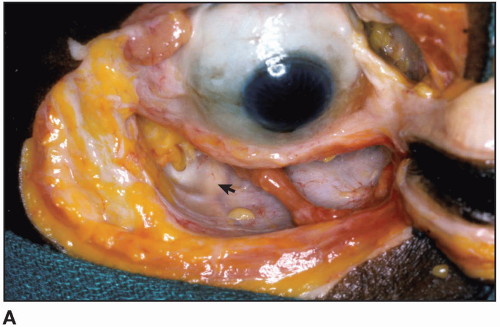Floor of the Orbit and Course of the Infraorbital Nerve
1 The zygomatic branch of the maxillary nerve leaves the infraorbital branch soon after the entrance to the inferior orbital fissure.
2 The zygomatic branch separates into zygomaticofacial and zygomaticotemporal branches, as seen previously.
3 The infraorbital nerve passes below a thin central orbital floor, passing more medially to come out at the infraorbital foramen.
4 Prior to the exit, the infraorbital nerve has two or three branches to the ipsilateral teeth and gingiva; these are the posterior and middle superior alveolar nerves and the anterior superior alveolar nerve, which comes off 5 to 20 mm prior to the foramen. The posterior branch is back much further and requires injection behind the maxillary tuberosity where it enters the bone.
An injection directly into the foramen may also affect the anterior superior alveolar nerve (see Chapter 8).
5 Direct injection of the infraorbital nerve does not lead to neuritis, but the patient may get a quick electric shock sensation there, if the needle hits the nerve directly.
 Figure 7E.1A The upper and lower eyelids have been detached from the lateral orbital tubercle and reflected medially. The orbital fat has been removed, exposing the inferior orbit.
Stay updated, free articles. Join our Telegram channel
Full access? Get Clinical Tree
 Get Clinical Tree app for offline access
Get Clinical Tree app for offline access

|